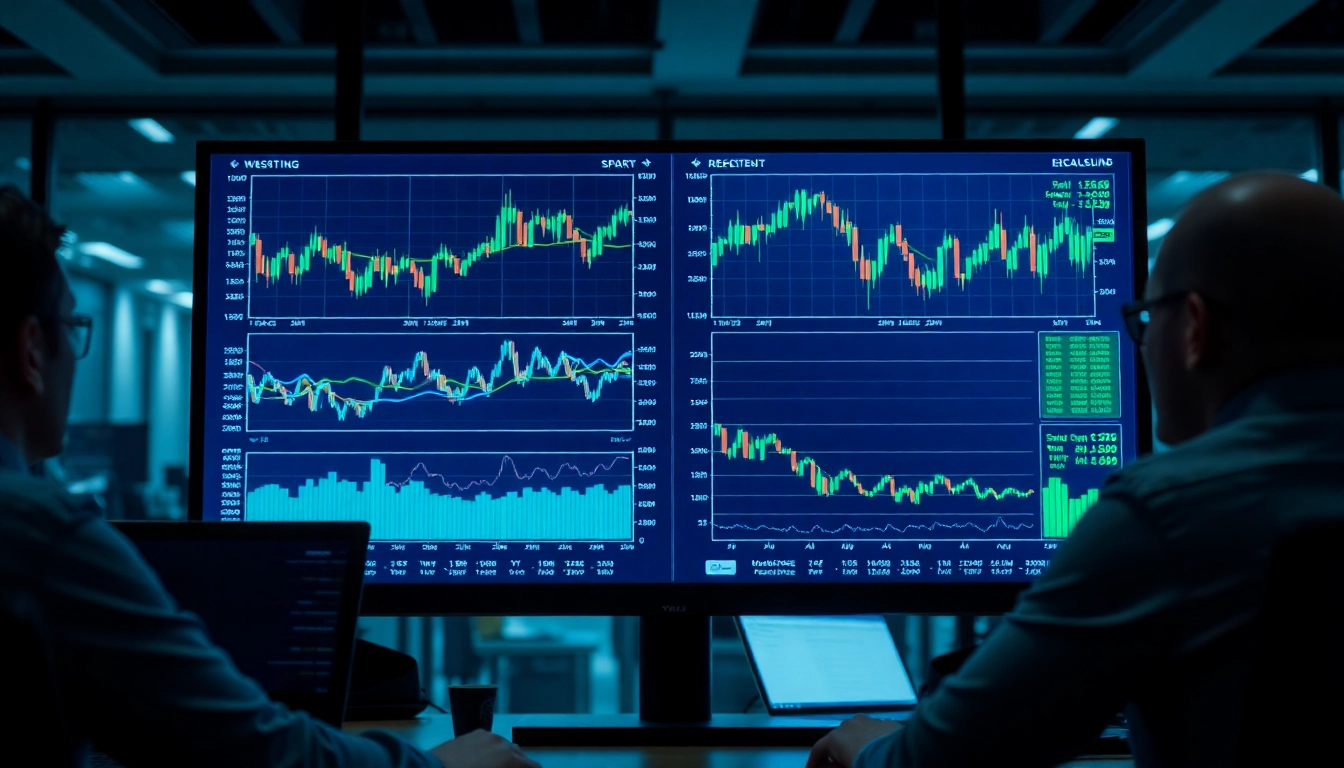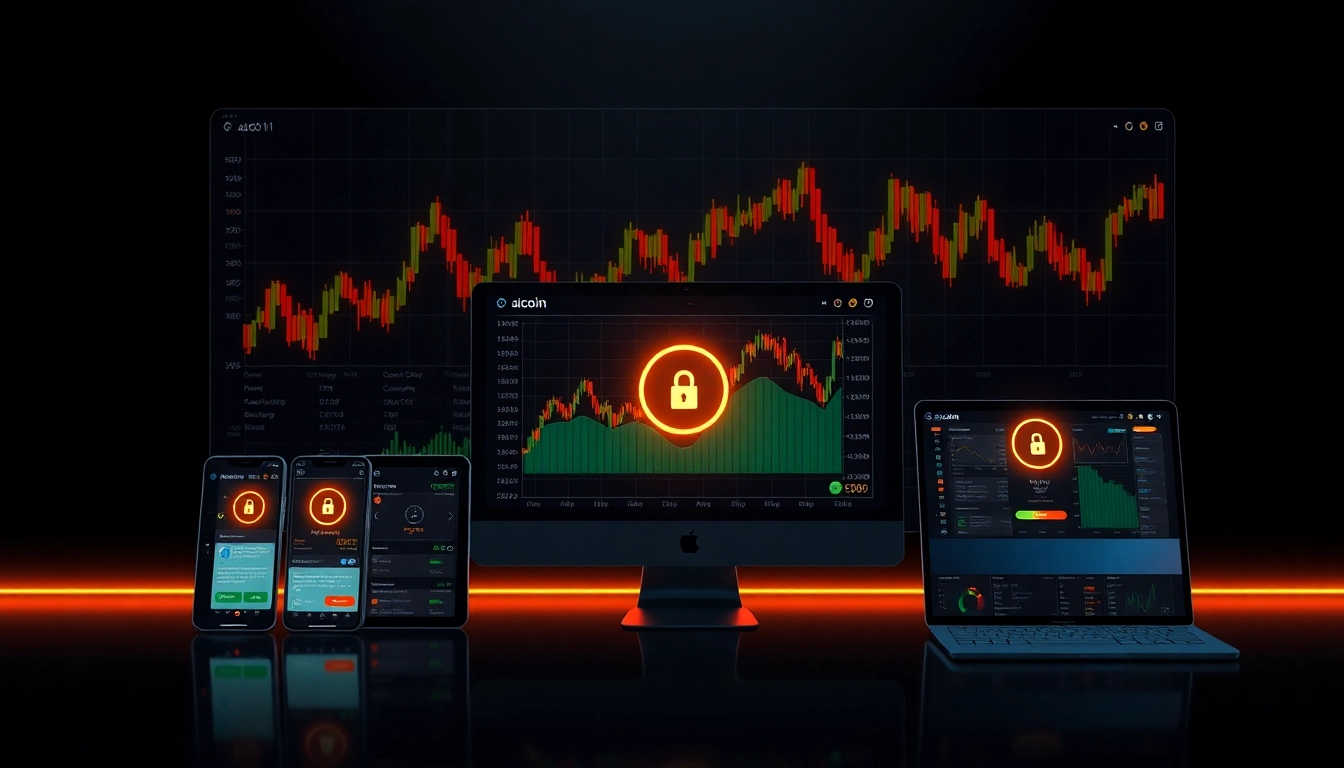Understanding Trading View and Its Core Features
Overview of Trading View’s Charting Tools
Trading view has established itself as a leading platform for technical analysis and market visualization. Its sophisticated charting tools are designed to cater to both novice traders and seasoned professionals. The platform offers a wide array of chart types, including candlestick, line, bar, and Heikin-Ashi charts, providing traders with flexible options to interpret market movements effectively. One of the standout features is the ability to overlay multiple indicators and drawing tools on a single chart, enabling users to craft detailed technical analysis tailored to their strategies. The platform supports customizable timeframes—from seconds to months—allowing traders to analyze intraday price action or long-term trends seamlessly.
Moreover, Trading View’s charting interface is renowned for its intuitive user experience. Users can zoom, pan, and adjust chart parameters with ease, facilitating in-depth analysis without steep learning curves. Its cloud-based architecture ensures that charts are accessible from any device—whether on desktop, tablet, or mobile—empowering traders to stay glued to the markets wherever they are.
Advanced features like multi-chart layouts, the ability to save and share chart setups, and real-time data feeds contribute to a comprehensive analytical environment. For instance, traders interested in cryptocurrencies can utilize Trading View’s specialized crypto charts, which include live updates, order book information, and social insights. To explore the broad spectrum of available charts and tools, visit trading view.
Real-time Market Data and Alerts
In today’s volatile markets, access to real-time data is critical. Trading View excels in delivering instant market updates across a diverse range of asset classes, including stocks, cryptocurrencies, forex, commodities, and indices. Its live data feeds are sourced from reputable exchanges and financial information providers, ensuring accuracy and timeliness. The platform’s dynamic alerts system is particularly valuable for active traders; users can set customized notifications based on price levels, indicator signals, or specific market events. These alerts can be dispatched via SMS, email, or in-app notifications, allowing traders to react swiftly to market movements without constantly monitoring charts.
For example, a trader monitoring bitcoin might set an alert for a particular support level, so they are instantly notified if the price drops to that point. This proactive approach enhances decision-making efficiency, especially during high-volatility periods or when trading multiple assets simultaneously.
Trading View also features pre-built alerts based on popular technical indicators, such as moving averages, RSI, or MACD. These tools allow traders to automate their trading hypotheses, minimizing manual observation and reducing emotional biases. As market conditions evolve, these alerts help traders stay informed and prepared to act, thus optimizing their trading strategies.
Social Features and Community Insights
One of Trading View’s standout strengths is its vibrant community aspect. It functions as a social network where traders and investors share analysis, trading ideas, and strategies. Community ideas are visible on the platform, enabling users to access diverse perspectives and insights that complement their personal analysis. This collaborative feature fosters continuous learning, helps traders discover new patterns, and gain validation for their strategies.
Furthermore, users can publish their own chart analyses, comment on others’ ideas, and participate in discussions. The social element transforms trading from a solitary endeavor into an interactive experience, where real-time feedback and peer validation enrich decision-making processes. This dynamic environment also enhances transparency, as traders can verify competing viewpoints before executing trades.
Trading View’s social features are integrated with its charting capabilities, making it effortless to embed community ideas directly into workflows. The platform’s active presence on social media platforms such as Instagram and X (Twitter) reinforces its position as a central hub for market chatter and expert insights.
Implementing Trading View for Effective Trading Strategies
Setting Up Custom Watchlists and Indicators
Effective trading begins with organizing assets and monitoring pertinent data. Trading View facilitates this through customizable watchlists, which can be tailored to specific markets, sectors, or individual assets. Traders can create multiple watchlists—such as stocks, cryptos, or forex pairs—and add live data for each asset. This setup allows swift navigation between different markets, providing an organized, real-time snapshot of trading interests.
Beyond watchlists, the platform supports a vast library of technical indicators—ranging from popular tools like Bollinger Bands, Fibonacci Retracements, to complex custom indicators developed via Pine Script, Trading View’s proprietary scripting language. Traders can combine and overlay indicators to develop personalized signals, significantly enhancing analysis depth. For example, a forex trader might overlay RSI and moving averages to confirm trend continuations or reversals.
To maximize efficiency, traders should regularly backtest their indicator combinations, adjusting parameters based on historical performance. Proper setup of these tools enables quicker decision-making and helps avoid impulsive trades based on incomplete information.
Using Trading View to Analyze Stocks, Cryptocurrencies, and Forex
Trading View’s versatility shines through its robust analysis tools tailored for different markets. For stock analysis, traders leverage fundamental overlays with technical patterns, focusing on key support/resistance levels, volume, and moving averages. Cryptocurrency traders benefit from real-time updates on digital assets, charting crypto pairs with integrated order book data and social sentiment. Forex traders exploit the platform’s currency-specific charts, economic calendars, and news integrations to anticipate market moves.
Case studies reveal that combining technical analysis with fundamental insights—such as earnings reports or geopolitical events—can improve the accuracy of forecasts. Trading View’s multi-asset capability makes it easier to draw correlations, develop cross-market strategies, and diversify risk effectively.
Furthermore, traders should utilize the platform’s comprehensive suite of tools—like pattern recognition, Fibonacci tools, and volume analysis—to refine their entries and exits, increasing the potential for profitability.
Automating Alerts and Notifications for Market Movements
Automation is vital for maintaining an edge in fast-moving markets. Trading View allows traders to set up alerts that automatically notify them of specific conditions without manual oversight. For example, a trader can configure an alert to trigger when a stock crosses a moving average, or when a cryptocurrency’s volume spikes significantly.
These alerts can be customized by asset, condition, and severity, ensuring traders only receive relevant notifications. Integration options include email alerts, push notifications, or popup messages within the app, making sure traders stay informed across devices.
Effective use of alerts minimizes reaction times, enabling traders to act swiftly and capitalize on emerging opportunities or avoid potential losses. Combining alerts with predefined trading plans can also introduce discipline and structure into trading routines.
Advanced Trading View Techniques and Best Practices
Integrating Trading View with Trading Platforms
For traders seeking seamless trading execution, integrating Trading View with broader trading platforms is essential. Many brokers and platforms support direct integration, allowing users to execute trades directly from the charts. This integration reduces latency, improves execution speed, and maintains a consistent analytical environment.
Setup typically involves linking your broker account to Trading View via API or through supported integrations. Once connected, traders can place orders, modify positions, and monitor trade performance—all within a familiar charting interface. This synergy accelerates decision-making and enhances the overall trading experience.
Leveraging Chart Patterns and Technical Analysis
Successful traders often rely on identifying well-defined chart patterns, such as head-and-shoulders, double tops/bottoms, flags, and pennants. Trading View’s pattern recognition tools, along with manual analysis, assist in spotting these setups early.
Combining patterns with technical indicators like moving averages and oscillators strengthens the probability of accurate predictions. Practitioners should also leverage volume analysis to confirm the validity of formations, as rising volume often indicates strong support for a pattern’s breakout or breakdown.
Continuous practice and review of historical charts help traders develop pattern recognition skills vital for timely entries and exits.
Tracking Performance Metrics and Improving Strategies
Monitoring trading performance is crucial for ongoing improvement. Trading View provides tools to analyze the success rate of strategies, including detailed trade logs, profit/loss metrics, and backtesting capabilities. Using these insights, traders can refine their strategies, adjust parameters, and eliminate weak setups.
Moreover, maintaining a trading journal that incorporates Trading View’s analysis and alerts can reveal patterns in behavior and strategy effectiveness. Regular performance reviews help identify strengths and areas for improvement, fostering a cycle of continuous skill enhancement.
Comparing Trading View with Competitors: Features and Benefits
Key Differentiators of Trading View’s Platform
Compared to competitors like Webull or MetaTrader, Trading View’s key advantage lies in its cloud-based architecture, extensive social features, and broad asset coverage. Its ability to share ideas, access a global community, and customize analysis tools sets it apart. The platform’s user-friendly interface, coupled with advanced scripting via Pine Script, offers unmatched flexibility for traders seeking tailored solutions.
Benefits of Community Sharing and Idea Generation
The social aspect encourages collaborative learning, idea validation, and marketplace transparency. Traders can follow industry experts, participate in heated debates, and leverage crowd-sourced insights—creating a more informed and confident trading environment.
Pricing Options and Accessibility for Traders
Trading View offers multiple tiers, from free plans with core features to premium subscriptions that unlock advanced tools, multiple charts, and priority customer support. Its accessibility across devices and operating systems ensures that traders of all levels can benefit from its robust capabilities without significant financial investment.
Getting Started with Trading View: Tips for New Users
Creating Your First Watchlist and Charts
New users should begin by setting up personalized watchlists focusing on their preferred markets. Exploring different chart types and playing with indicators will help familiarize users with the platform’s capabilities. Starting with simple setups before layering complex indicators can prevent overwhelm and build confidence.
Customizing the Interface for Optimal Workflow
Adjusting layout preferences—such as multi-chart views, color themes, and shortcut keys—can streamline analysis. Trading View’s flexible interface allows traders to configure their workspace to match their trading style, whether day trading or long-term investing.
Accessing Educational Resources and Support
For newcomers, Trading View’s extensive library of tutorials, webinars, and community discussions serves as a valuable resource. Engaging with these materials enhances understanding and helps traders develop effective strategies that leverage the platform’s full potential.



